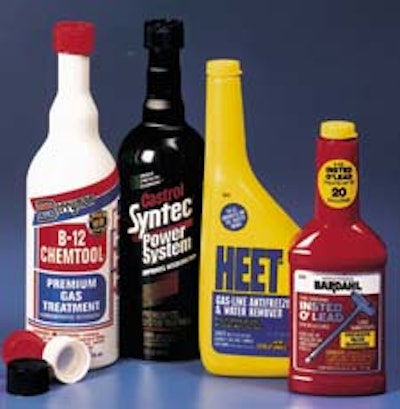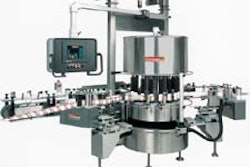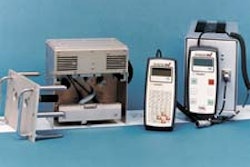The cosmetics industry wants to do a makeover on the proposed rule that would require the use of child-resistant closures (CRCs) on a wide range of consumer products. As the proposal cites, the Consumer Product Safety Commission (CPSC) would require CR caps on suntan lotions, bath and baby oils and makeup. Makers of household cleaning solvents and automobile care products are also seeking exemptions from the proposed rule, which covers products containing more than 10% hydrocarbons.
“Those child caps are designed for products like aspirin and cough syrups,” says Dennis Lott, executive director of technical affairs for Tanning Research Laboratories, Inc., Daytona Beach, FL, a maker of Hawaiian Tropic products. “The aesthetics don’t match up with our products. When you mention child-proof[sic] caps to the marketing people, they flip out.”
The CPSC is concerned that young children might either drink these products or spray them into their mouths. This could result in chemical pneumonia, pulmonary damage or death.
Although the three CPSC commissioners all approved the proposed rule’s publication on Jan. 3, two of the three voiced misgivings about at least one category of products that was included: mineral-oil based cosmetics products. This category would include hand and face creams, suntan products, nail products and bath oils. These are made with mineral oil, which the Cosmetic, Toiletry and Fragrance Assn. (CTFA) maintains is a benign form of hydrocarbon.
Study of mineral oil
Commissioner Sheila Gall said, “There simply was inadequate data available to support going forward with respect to those mineral oil-based hydrocarbons [that are] regulated under the Federal Food, Drug and Cosmetic Act. Indeed, there appears to be considerable disagreement as to the toxicity and potential hazards posed by such products.” But there was no precedent for taking cosmetics out of the rulemaking and establishing a separate rulemaking, on a separate track, for that product category.
In an effort to resolve the concerns of Gall and commissioner Thomas Moore, the CPSC in February this year purchased 1998 data from the American Assn. of Poison Control Centers (AAPCC). That data will show four categories of cosmetics and identify which brand names within the four were responsible for reported poisonings. If cosmetics whose only hydrocarbon is mineral oil have never led to serious children’s accidents, in all likelihood those products would then be eliminated from the rule.
However, some cosmetics may combine mineral oil plus other hydrocarbons. It may be more difficult to determine which of these products to regulate. For example, if the CPSC finds that “XYZ Baby Oil” has caused 10 poisonings, it will take a chemical analysis to see whether that product would fall within the CPSC’s proposed guidelines for regulation. The guides: that it contains more than 10% hydrocarbon by weight and flows at a rate faster than (e.g., a low viscosity) 100 Saybolt Universal Seconds (SUS) at 100°F.
A Feb. 4, 2000, memo to the commissioners from two top staffers said, “To collect and test the potentially large number of products identified from the data (depending on the number of brand names identified) could place a large burden on the CPSC chemistry laboratory.”
Forcing cosmetics to go to CRCs has huge implications, both for packaging costs and product marketability. One baby oil manufacturer reported to the CFTA that CRCs would cost $1 million per year for new molds for bottles, increased component prices (caps, etc.) and new tooling for product filling lines.
Besides the cost implications, there is a second worry about senior citizens who might have trouble using a product with a CRC. For example, 70% of baby oil sales are to older adults.
With regard to bath oils, one company reported an anticipated increase of 30% in total packaging costs for one SKU. Another company estimated $1 million to $1 1/2 million per year if a custom-designed cap is needed, which is likely given the aesthetic considerations of cosmetics package design. If a custom cap is not needed, the company estimated an increase of $300ꯠ the first year and $125ꯠ annually thereafter.
To the extent that some bath oils contain mineral oil and others hydrocarbons, the simple fact that CRCs suddenly appeared on hydrocarbon-containing bath oils might, in the words of one manufacturer, “result in erosion of sales for this item.”
What about pumps?
In addition, bath oil and other cosmetics that are packaged together in a gift-type promotional package often have pumps. CRCs for pumps are impractical, Packaging World is told. If they were required, those promotional packages might go out the window.
Todd Mathes, business unit manager, chemicals, for Rexam Closures (Evansville, IN), agrees that CRCs for pumps are non-existent. But he thinks there are some CRCs that would work with suntan lotions and other products that are squeezed out. “With a customized cap, they can keep their look,” he states.
Ken Giles, a CPSC spokesman, says the agency is now analyzing the AAPCC data. “It will be some time before we take the next step,” he states.
Cosmetic manufacturers are not the only ones in the grip of packaging paranoia. Initially, the CPSC referred to this rulemaking as also dealing with “petroleum distillates.” But that raised questions about whether the Commission intended to cover products containing “aromatic hydrocarbons” such as benzene, xylene and toluene. Canada excludes aromatics from its definition of petroleum distillates for cautionary labeling and child-resistant packaging.
Other products, too
The products at issue with petroleum distillates are products like paints and cleaning solvents and adhesives. When the Jan. 3 proposed rule came out, the CPSC had changed its nomenclature to refer to hydrocarbons instead of petroleum distillates and made it clear that aromatics would be covered. So would household cleaning products containing more-than-threshold amounts of the chemical limonene, also not technically a petroleum distillate.
Not only is the CPSC sorting through product categories, the agency is also working its way through decisions on which types of packages will need a CRC. The CPSC had initially thought all sprays should be included if they met the 10% hydrocarbon/100 SUS criterion.
But the proposed rule issued in January said the CPSC would exempt aerosol cans and aerosols packaged with mechanical pumps and trigger sprayers that expel product in a mist, provided that the spray mechanism is either permanently attached to the bottle or has a child-resistant attachment. That could be an overcap. Only aerosols that spray in a “stream” would be covered. Rexam’s Mathes says there are very few CRCs for that product category.
The Chemical Specialties Manufacturers Assn. (CSMA) wants all aerosols exempted. “The great weight of data available from poison control centers indicates that pressurized aerosols are extremely unlikely to present a risk of aspiration pneumonitis,” says Brigid Klein, regulatory counsel. This is true even when aerosols are sprayed directly into the mouth, according to a 1963 study cited by the CSMA.
If the CPSC decides to stick with its plan to require CRCs on “stream” sprayers, then the agency will have the job of defining what constitutes a stream. The CSMA says that definition should include anything with a spray pattern less than 2” in diameter at a distance of 12”.
Inner seals
Some companies are arguing that their current caps aren’t technically CRCs but are good enough anyway. Roger Tucker, director of quality & technology at Coastal Unilube, Inc., Memphis, TN, says his company’s lubricating oils and car care products are capped with a foil inner seal. “While this foil seal does not fit within the definition of ‘child-proof,’[sic] it is difficult to open,” he says.
Moreover, the entire contents of the container is supposed to be poured into a gas tank on the first (and ostensibly only) use. So there is nothing left over in the bottle, nor is the bottle stored on a shelf. Tucker says he could see adding a label statement to the effect: “Add entire contents to gasoline tank.”
Johnson & Johnson Consumer Products Skillman, NJ, is now putting foil seals on Johnson’s Baby Oil. But John McKeegan, spokesman for the company, says the foil is a tamper-evident feature, not meant as a child-resistant measure.
Rexam’s Mathes says his company sells a lot of two-piece “push-and-turn” child closures for automotive products, and that they are readily available.
As is the case with any upcoming federal rule with implications for packaging, another big question is the effective date. CPSC spokesman Giles says the Commission has leeway here: Generally it makes final rules effective six months to one year after the rule is published. But a two-year time frame was imposed when a new packaging test rule was finalized five years ago.
























